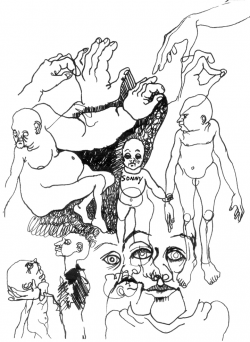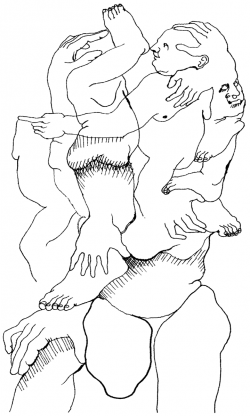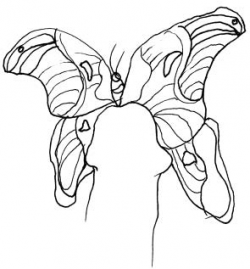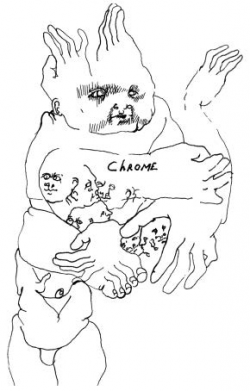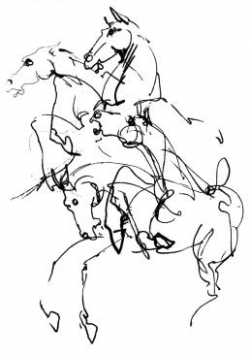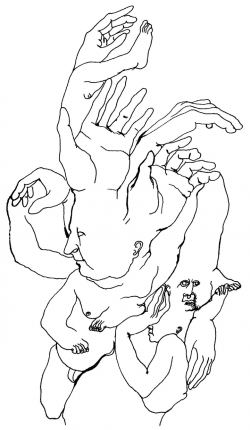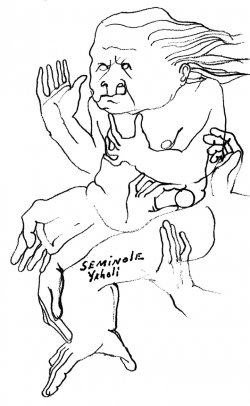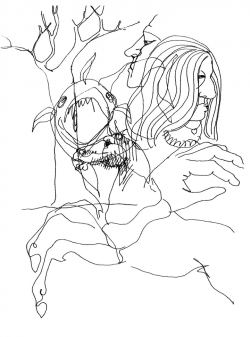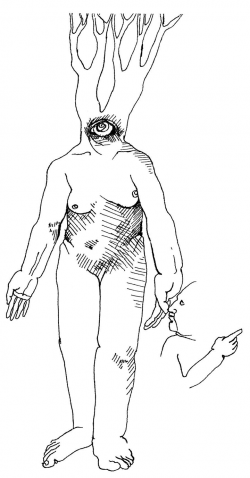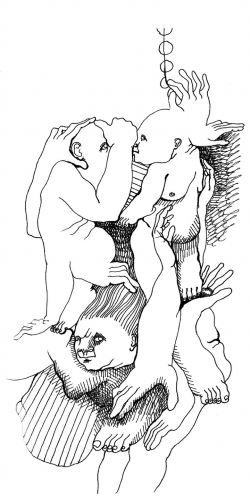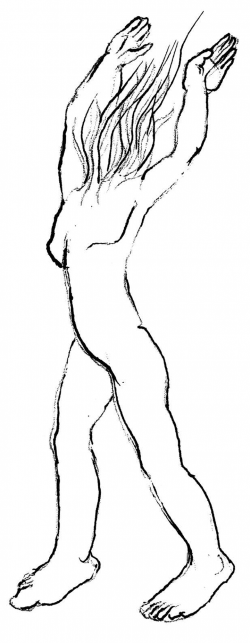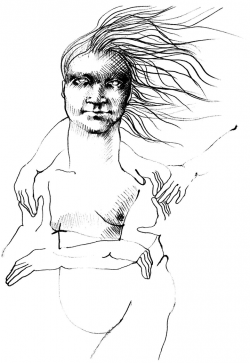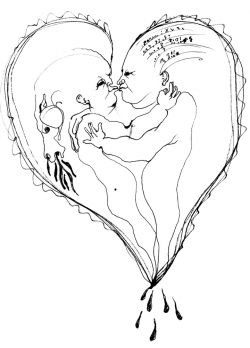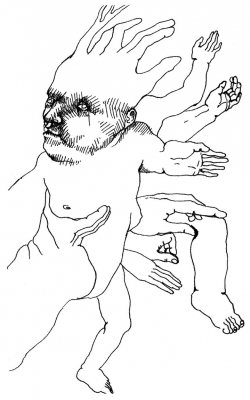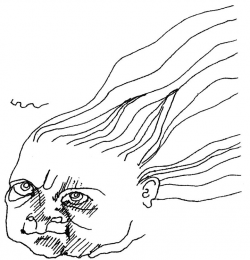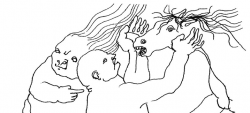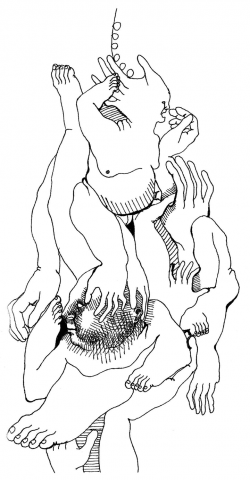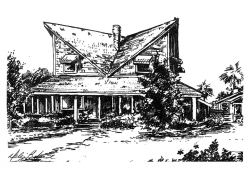FLAME VINE: HIS VOICES
Ken Braddick with Charles Porter 2017
Kenneth J. Braddick, the creator of Horse Sport USA, a magazine focused on high-performance dressage and jumping all over the world, is also a veteran news correspondent and has covered major events and several wars around the globe. Braddick is the owner of Dressage- News.com based in Wellington, Florida, one of the epicenters for high- performance sport horses. Dressage-News.com is a highly respected source of news and information in the world of competitive dressage.
KB: So, Charlie, here we are again.
CP: Yeah, you and I could always talk about this kind of stuff. I liked the questions you asked about the first novel.
KB: This is the second novel about your protagonist, Aubrey Shallcross, the first novel simply having your main character’s last name for the title.
CP: It’s Aubrey’s life from 8 yrs. old until he’s in his early forties. The other book starts when Aubrey is forty-two. They don’t have to be read in order though.
KB: What do you have to say about this new book, Flame Vine? How would you describe the feel of it?
CP: Historical, hallucinatory. A kind of bildungsroman, the big word for a young man’s life story like, Tom Jones or Henry Miller’s Tropic of Cancer. Also a drop of that famous old Broadway play, A Death in the Family, and the Greek one by Aristophenes, before Christ, Do the God’s Exist?. Or
something like that.
KB: You planned it that way?
CP: I don’t think so. Just sort of comes around for me and my friend.
KB: You mean, Triple Suiter?
CP: Him, and the rest of the whittle monsters. You tell me who those voices are people hear in their head, those so-called schizophrenics.
KB: I don’t know the answer to that. Do you remember a lot of what you wrote?
CP: It’s free indirect style—drifty sometimes. I might be a little short on the recollection.
KB: Explain.
CP: Well I remember the storytelling parts of the book. But you’re talking about the head trope of a schizophrenic man, Aubrey Shallcross, and his schizophrenic slipper, Triple Suiter, who’s other voice is named, Amper Sand, and I’m not sure who Amper Sand talks to, all on the back of the infinite regression you see in a three way mirror or the old picture of the Quaker Oat man on the Quaker Oat box when I was a kid. I mean, how can you track that exactly? Maybe look for the footprints of the lady inside the Tin Snip Killer’s refrigerator in the story, holding a picture of herself holding a picture of herself in the refrigerator like the Quaker Oat man, her eyes on the infinity code HTML:∞, her image getting smaller and smaller in the picture of the picture of herself until she’s so slim she disappears.
KB: That’s a thicket. How did you assemble that?
CP: I didn’t. The Greeks did. And that HTML thing is Microsoft’s software code for infinity. Also Cervantes presented that type of regression when he wrote the second Don Quixote book. The book opens with a man, Quixote, reading a story about a man who’s reading a story about a man, who’s reading a story about himself in a book, on out to the abyss.
KB: Ah, your main character, Aubrey Shallcross, is a Quixote and has a fear of disappearing by the means of infinite regression?
CP: Yes it is one of the main themes of the book, that, self-erasure, fear, and attacking hallucinations, and the joys in between. Aubrey is afraid when he dies he will get smaller and smaller until he disappears forever. And he is afraid in the meantime he will he’ll go insane from the tenebrific terror
of the Blind Spot Cathedral that comes to him after he passes out when he thinks about disappearing after he dies. A little like that famous take on existence from Milan Kundera, The Unbearable Lightness of Being. But it’s his other voice, Triple Suiter, that makes him feel better about all this.
KB: But why so afraid of that?
CP: Haven’t you ever wondered who you really are and what happens after this? Do you completely disappear? Haven’t you ever had a fear of going insane about that?
KB: You’ve got me thinking about it.
CP: Good. You can suffer with the rest of us.
KB: So you like that South Florida landscape . . . that setting.
CP: I’m as hopped-up as Kerouac about it. But I think anybody can write about where they’re from forever.
KB: But why do you write this particular story?
CP: I have a Slim Hand inside of me, like Aubrey, a bad voice. I write this to accentuate Aubrey’s good voice, Triple Suiter, and that helps me attenuate my bad voice, just like it helps Aubrey muffle his bad voice when he has Triple Suiter.
KB: Do you have a good voice, other than in the stories you write?
CP: I wish I did. But no, at least not yet.
KB: Ever get treated for that.
CP: Reluctantly. You can’t really treat it. I always quit the medicine.
KB: Describe Aubrey, here in this interview.
CP: A half breed. A normal man with a few talents and a few normal life experiences, and the other part of him is the man best described in the first Shallcross novel. An unencumbered free-baser that bears down on his red means run senses every day; a connoisseur of the psycho-generated Souvenir, and an auteur of the third eye pie; so with carburetion like that, you can easily be unhorsed and chased through the doors of your
own rectum and once again, disappear.
KB: I wanted to ask you about the drawings in the book. You put drawings in the first book at the beginning of the chapters.
CP: These are drawings by Kathy Von Ertfelda. She is a special kind of artist and her drawings land on a lot of what I consider the mental imagery in the book.
KB: Some are very bizarre.
CP: So is some of this story. I like drawings in books. Reminds me of film. I feel like I write film.
KB: In your other book, Shallcross, you talked about the third eye pie and you even mention Naked Lunch.
CP: I did? Oh well then, this book, Flame Vine, is Love in the Time of Lunch, Love in the Time of Lyrica.
KB: Lyrica? That drug on TV all the time.
CP: Yeah it’s an anti-seizure drug actually that works for nerve pain. Well I mean Aubrey doesn’t take it in this story, he takes Qualuudes at night to sleep, and they take him down to the lounge where the voices come and tell him to pick a film.
KB: Do you take Lyrica?
CP: Getting close to my air puck aren’t you? But yes I have. I took it for a while for nerve pain after a horse accident. Then I found it helpful for the other part, the part that calms you down when something is trying to chase you through the doors of your own rectum.
KB: So tell me about the historical part of the book—the 60’s, 70’s, and 80’s.
CP: Briefly:
The 60’s were idealism vs. realism.
The 70’s were a long boring transition to the 80’s.
The 80’s were that old Greek quote in Flame Vine that goes:
“First secure an independent income, then practice virtue.”
KB: What about the hallucinatory part of this book.
CP: Well, it’s accounted for in the story. The Blue Goose Bunch was doing hallucinogenic drugs. But of course Aubrey had his own hallucinations without any drugs, because of the way his mind was.
KB: Another personal question. A tap root question. Do you have hallucinations?
CP: More as I get older. Mostly auditory. Some visual . . . sometimes, but very few. I wouldn’t admit to that when I was younger or in the other interviews. If it gets really loud, there’s a drug called Seroquel, and yes, it’s an anti-psychotic drug. But I’ve been in good shape without cheaters lately and I can never do it more than a week because I hate it. It’s been a couple of years that I had to do anything. Those drugs, especially Seroquel, will turn you into an eggplant. Like Kesey used to say, “The fog rolls in.” Eggplant fog. Aubergine fog. Funny, I used to do mushrooms to open doors when I was young, now I do a prescription if I need it to keep them closed. But I always heard that other voice stuff, even as a kid.
KB: Do you belong to the Hearing Voices Network that you always dedicate your books to?
CP: I don’t. But I think it’s a great thing. There are all kinds of voice hearers in those meetings. Some aren’t too happy, but a lot of others have good voices they listen to or deal with, even though some of their old bad voices linger. It’s kind of like an AA for them, where they support each other.
KB: What else should we discuss.
CP: Up to you.
KB: I hate this question, but in the name of cliché journalism, I have to ask it—what is this book about, other than the storytelling parts?
CP: Here’s the way I see it in both books, Flame Vine and Shallcross. The books are like the contrast between Jules Verne and Rimbaud, the French poet. The “righty-tighty” expression in Flame Vine is the perfect enclosure of Verne’s safe place, the Nautilus, in 20,000 Leagues Under the Sea. The “lefty- loose” expression is Rimbaud’s Drunken Boat—open chaos—Camus stuff. The rest is the Slim Hand cramming one or the other down our throat. Jim Morrison was chaos, raising hell about everything and wanting everyone to get their life down to their naked lunch. It reminds me of the word palindrome in Shallcross: “You can cage a swallow can’t you, but you can’t swallow a cage, can you.” Morrison didn’t want us to swallow any shit, so he might have swallowed it for us in that Paris bathtub his last night on earth. I don’t know, and I don’t think he really knew either. More chaos. Aubrey Shallcross had relief from all this, it was when he was running with the Blue Goose Bunch, sitting on a good horse, singing in front of his band, or surfing with John Chrome. And it was when he would pretend he was a roseate spoonbill in the mangroves of the Indian River, and go under his wing to dream. What else can you do?
KB: Yeah mansion, finished. Thanks. Oh! One more thing. I presume there will be a sequel to the first Shallcross book, to complete the trilogy.
CP: Yes.


